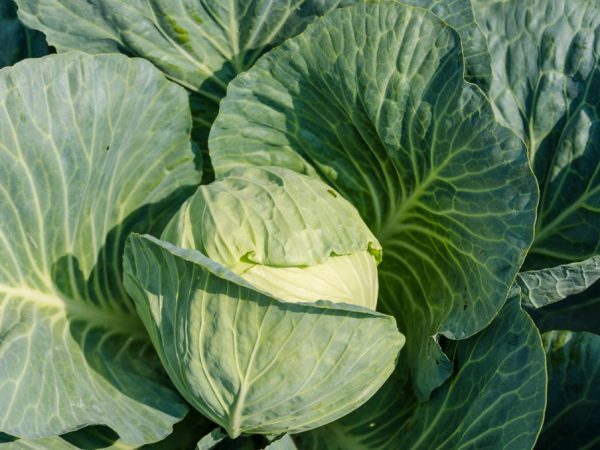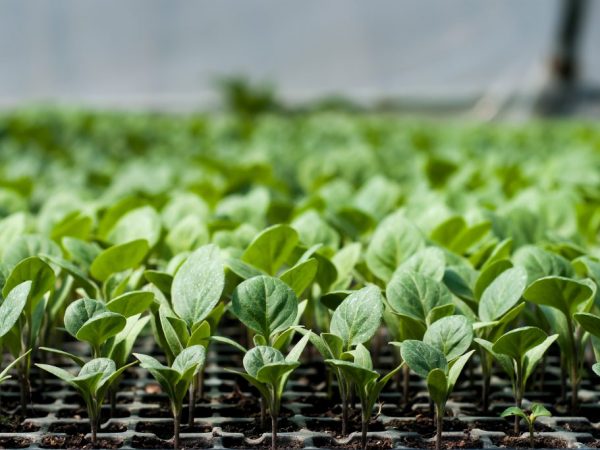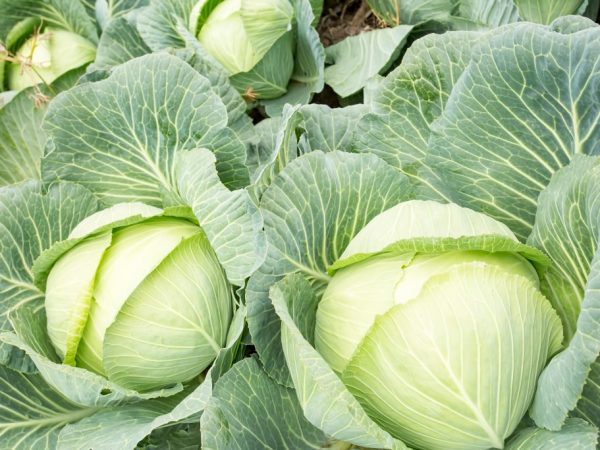Care rules for growing cabbage in the garden
Each variety of cabbage has its own advantages and planting dates. Appropriate care accelerates the growth and productivity of the plant. Proper cultivation of cabbage is the key to a good harvest.

Care rules for growing cabbage in the garden
Growing methods
Cabbage is grown in the following ways:
- seedling method;
- reckless.
The seedling method is quite simple. The root of the vegetable crop becomes pivotal. The plant tolerates drought well. Saplings ripen 10 days after planting. This method is suitable for early and mid-season varieties. Seed consumption will be quite large.
Seed preparation for sowing
The main agrotechnical measures for the cultivation of cabbage by the non-seedling method:
- calibration;
- hardening;
- disinfection;
- warming up;
- processing with microelements;
- sowing seedlings or in open ground.
Preparing seeds for seedlings begins by placing them in warm water at about 45 ° C for 20 minutes. Then they are dipped in cold water for 4-6 minutes. This contributes to the hardening of the seedlings in the future.
You can also sprout the material a little by simply wrapping it in a damp cloth and leaving it at home at room temperature on the windowsill for 2-3 days. From time to time, do not forget to moisten the surface of the fabric; a spray bottle works well for this.
Seeds for seedlings are sown 2 cm deep, using a container of 6 × 6 cm or 7 × 7 cm. Cover with foil or paper on top. Plants are kept at a temperature of 15-20ºC. The term for planting a seedling in open ground is 40-50 days after sowing seeds for seedlings.
For good growth, the seeds are dipped in the following solution: "Humate", "Silk" or "Epin". Before wetting the seeds and hardening them, you need to carefully read the instructions. Moisture is contraindicated for some store seeds.
The timing of planting seeds for seedlings
Each variety of vegetable crops has its own planting dates.
| Variety | Sowing time |
| White-headed (hybrids, early-ripening), red-headed | March 12-23 |
| White-headed (late and mid-season species) | April 4-14 |
| Kohlrabi | All March |
| Colored, broccoli | March 14-24 |
| Brussels | End of March - beginning of April |
| Savoy | From March 16 to April 12. |
Good precursors for cabbage are carrots, onions, and potatoes. It is not recommended to plant cabbage varieties in the place where cruciferous plants grew: tomatoes, beets, radishes, radishes.
How to prepare cabbage seedlings

Temperature conditions are important for seedlings
After sowing seeds for seedlings, seedlings appear on the 5-6th day. To grow good seedlings on your own, you need to monitor the temperature regime. After removing the film, the temperature is lowered to 5-10ºC. As soon as true leaves appear, the temperature rises to 16 ºC during the day and 10ºC at night.
Features of caring for cabbage seedlings:
- A week after the emergence of shoots, the soil is treated with a solution of potassium permanganate: 3-4 g per 10 l of water.
- Plant picking is carried out with the appearance of the first leaf. First, the soil is well watered with a large amount of water, then the seedling is removed with the soil and planted in an individual container, while cutting the root by 3-5 cm.It is recommended to use plastic cups measuring 5 × 6 cm or peat-humus pots (sometimes you can use cut plastic bottles ).
- The room is ventilated within 2-3 days. The windows are opened for 3-5 hours.
- It is advisable to cover the seedlings with gauze if they are exposed to direct sunlight. The covering material can be any lightweight fabric.
- Watering is stopped 3-4 weeks before transplanting into open ground.
Planting seedlings in the garden
It is necessary to plant seedlings in a permanent place in the garden when 4-5 leaves appear. Plant height should be 13-20 cm.
Open ground transplant times:
- for early maturing - early May;
- for mid-ripening - late May, early June;
- for late varieties - mid-May.
It is recommended to prepare the soil before planting. You need to choose a sunny place. The secret to growing cabbage in the right type of land. Early maturing grows best in sand with loam. Middle and late - in soil with clay. The soil with an increased acidity level is badly affected.
The soil for planting is dug up in the fall, and then the surface is leveled with a rake. All weeds are destroyed.
Schemes for planting seedlings in the garden
The technology for growing cabbage occurs according to a certain scheme:
| Variety | Scheme (landing map) |
| Hybrid and early maturing | 30 x 40 cm |
| Mid-season | 50 x 60 cm |
| Late varieties of white cabbage | 60 x 70 cm |
| Kohlrabi | 30 x 40 cm |
| Color | 25 x 50 cm |
| Savoy | 40 x 60 cm |
| Broccoli | 30 x 50 cm |
Plants and beds should not be thickened, because crucifers love space. Before planting, add 50 g of ash, 2 tsp to the wells. sand and peat, after which everything is poured abundantly with water. The seedling is planted together with an earthen clod and covered with earth, sprinkled with hay or wood ash on top.
Care

Provide the right care for your cabbage
You need to take care of the plant both at home or in the country, and in greenhouses or greenhouses. 2-3 weeks after planting the seedling in the open ground, the bush is spud.
To provide the cabbage with proper care, weather conditions are taken into account. If hot days are predicted, the plants are covered with newspapers or other material, and watered abundantly throughout the week.
Seedlings are taken outside for 10-15 minutes or left on the windowsill for 2-3 hours. Plants need to receive a lot of sunlight: about 11-14 hours a day. Regular loosening of the soil prevents drying out or waterlogging.
Caring for white cabbage involves several agrotechnical measures:
| Agrotechnical event | Mode of application |
| Watering | In the evening, on cloudy days, watering is carried out every 5 days. On sunny days, watering is carried out with an interval of 3-4 days. |
| Mulching | Mulch should be at least 4 cm thick. Use peat, hay or ash. |
| Plant processing | 3-5 days after planting in a permanent place in the garden, the cabbage is powdered with ash, tobacco dust. This protects the plant from pests. For the prevention of aphids, a solution of tomato tops is used. To do this, 2.5 kg of tomato tops are insisted in 6 liters of water. The solution is heated, cooled and diluted in 2 liters of water. At the end, add 40 g of grated soap. |
Caring for cabbage involves observing the rules for watering, loosening, weeding the soil and selecting fertilizers. For disinfection and prophylaxis, vegetable crops are treated with special agents against insects and diseases. For large heads of cabbage, it is important to observe not only the appropriate conditions for growing seedlings, but also good care during development and growing season.
Fertilizers
8 days after the dive, the first fertilizer is applied: 2 g of potassium agent, 4 g of superphosphate, 3 g of ammonium nitrate and 1 liter of water. You need to spray moistened vegetables. Top dressing is repeated after 2 weeks.It is also recommended to fertilize the soil with manure: 1 kg of manure per 10 liters.
For 3-4 days before planting seedlings in a permanent place, hardening feeding is carried out. 1 liter of water is mixed with 7 g of potassium, 3 g of ammonia fertilizer and 5 g of superphosphate. Store products are also used, for example, "Kemira Lux".
For growing cabbage in the spring, organic and mineral dressings are added to the soil (per 1 sq. M):
- wood ash - 4-5 tbsp.;
- rotted organic matter - 1 bucket;
- urea - 19-23 g;
- superphosphate - 40-50 g.
Diseases of cabbage

Disease can ruin crops
Most of the plants die due to inappropriate care due to diseases or pest attacks.
| Disease | Description | Method of struggle |
| Keela | Fungal disease. Forms root growths. Slows down growth, development. The consequence is sterility and wilting. Dangerous only for crucifers. | Diseased vegetables are removed, the growing site is disinfected. |
| Blackleg | Stem and root collar disease. The plant darkens, becomes black and rots. | For prevention, seeds are treated with granosan. For this, 0.2 g of the product is used for 50 seeds. The soil is treated with the preparation "Tiram" or "Planriz": 60 g per 1 sq. m. |
| Peronosporosis | Downy mildew. Yellow-red spots on the leaves are due to poorly processed seeds. | Adhere to the basic rules of seed preparation and hardening. The seeds are soaked in hot water for 30 minutes. The bush is sprayed with a solution. To do this, a mixture of 10 liters of water and 80 g of garlic is infused for 10 hours. It is heated and cooled. |
| Gray rot | It appears on the heads of cabbage in the form of mold with black dots. | They use high agricultural technology, preventive cleaning methods, and disinfect storage facilities. Affected vegetables are removed, and their place is treated with an antiseptic or Planriz. |
| Rhizoctonia | It manifests itself due to acidic soil and a mismatch in temperature conditions. In case of illness, the root turns yellow, becomes soft. The stem dries up and dies off. | Spraying with copper oxychloride or disinfectants. |
| Fusarium wilting | The causative agent is the Fusarium mushroom. The leaves turn yellow and fall off. | The plants are burned, and the place is disinfected and treated with a solution of copper sulfate. 5 g per 10 liters of water. |
Diseases of cabbage are quite dangerous not only for the harvest, but also for the soil in which they grow. After the destruction of diseased plants in the place where they grew, vegetables cannot be grown for another 2 years. You can grow cabbage culture both at home and in a greenhouse, taking into account all the rules of hardening, sowing and care. To grow cabbage, the characteristics of each giant vegetable variety are monitored.
Pests
Cultural pests:
- slugs;
- caterpillars;
- cruciferous fleas;
- babanukha.
Most of the pests eat the leaves, after which they curl into a tube and fall off. This applies to leaf beetles, moths and cabbage bugs. Pollination is used to combat them. Wood ash and tobacco dust are mixed. Lime is also used, mixing with water in a 1: 1 ratio.
Before the head of cabbage starts to form, the cabbage is treated with 2% Actellika. To combat slugs, traps are set, pests are collected. The mole is afraid of bacterial drugs, which include "Dendrobacillin" or "Dipel". They are used according to the instructions.
Cabbage butterflies leave larvae. For prevention, cabbage is treated with a mixture. It can be prepared at home. Add 10 g of white mustard to 1 liter of water, leave for 2 days and dissolve with water.
Harvesting and storing cabbage
It is correct to harvest at -2ºC when it is technologically mature. 2 weeks before harvesting the heads of cabbage, the beds are not watered. This gives the fruit a longer shelf life and a fresh look. The heads of cabbage are dug up together with the root system, folded under a canopy so that they dry out a little. The cabbage stumps are cut 2-3 cm from the head of cabbage. After that, the cabbage is placed in storage.
Most of the gardeners store their heads of cabbage in the cellar or in the country at a temperature of 4-6 ° C.The room where cabbage is stored should be free of mold. Good ventilation or weekly ventilation is required. If you store the heads of cabbage at home, they are wrapped in paper material and placed in the refrigerator.
Conclusion
Cabbage gives a good harvest for 2 years in a row, but only with proper care. Each variety has its own characteristics and benefits. It is recommended to grow cabbage in a vegetable garden or in a greenhouse. The best way is seedling. For a cabbage crop, a moist and fertilized soil is needed.


